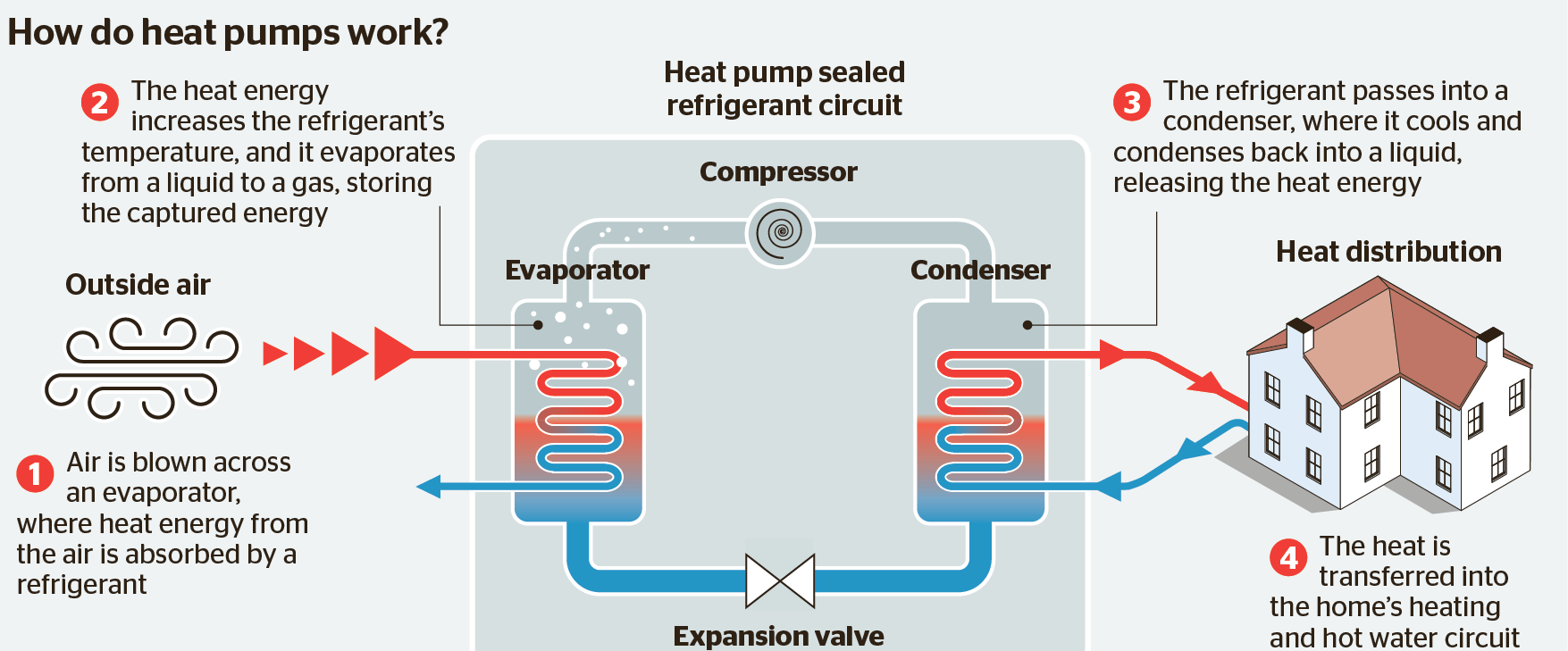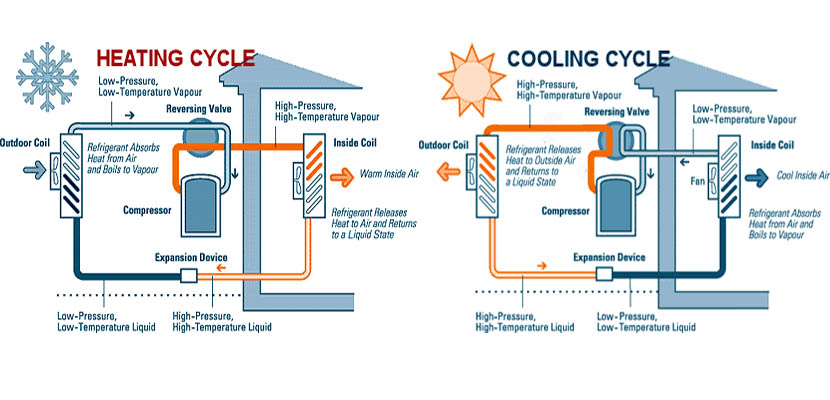What Is A Heat Pump And How Does It Work
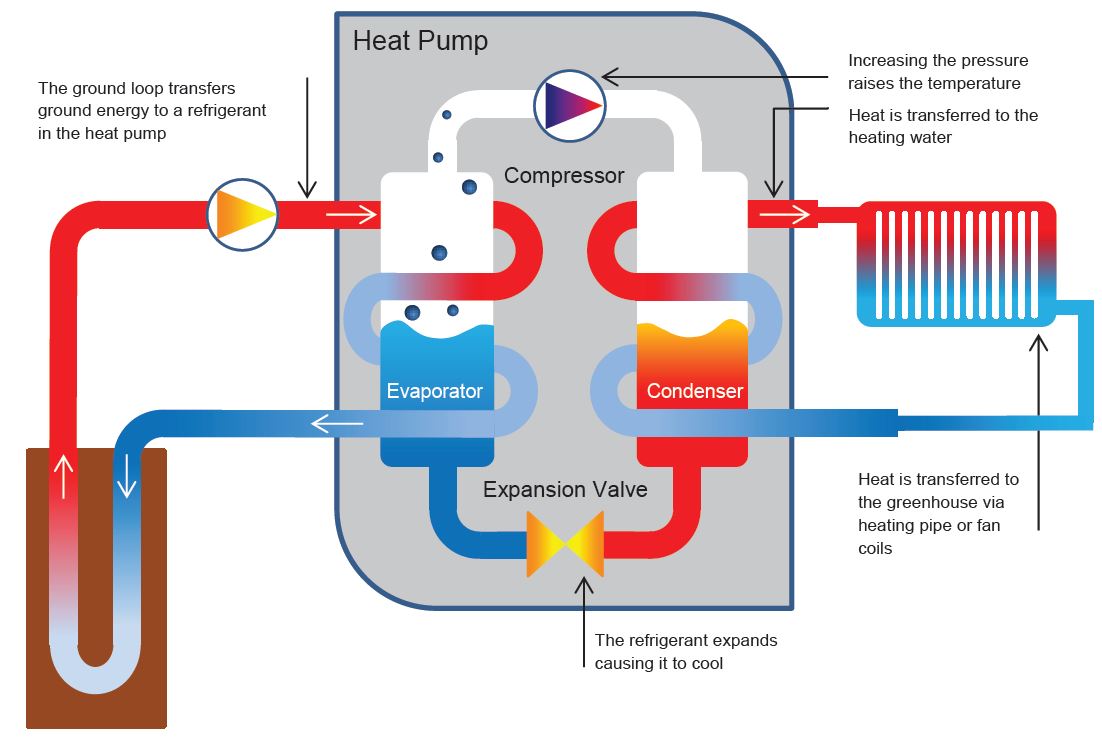
Imagine waking up on a chilly morning, expecting your home to be toasty, only to find it's colder inside than out. Or, picture a sweltering summer day where your AC struggles to bring relief, leaving you sticky and uncomfortable. These are common scenarios homeowners face, and a malfunctioning heat pump could be the culprit. But before you panic and call for expensive repairs, let's understand what a heat pump is and how it works, so you can tackle some basic troubleshooting yourself.
What is a Heat Pump and How Does It Work?
A heat pump isn't just a heater; it's a year-round comfort solution. Think of it as a refrigerator working in reverse. Instead of cooling the inside and expelling heat outside, a heat pump moves heat from one place to another. In the winter, it extracts heat from the outside air (even seemingly cold air contains some heat) and transfers it inside. In the summer, it reverses the process, pulling heat from inside your home and releasing it outdoors.
Essentially, it’s an efficient and cost-effective way to both heat and cool your home, especially in moderate climates.
Here’s a breakdown of the key components and how they work together:
- Refrigerant: This is the working fluid that absorbs and releases heat as it circulates through the system.
- Compressor: The heart of the system, it pressurizes the refrigerant, increasing its temperature.
- Condenser Coil: Located in the outdoor unit, this coil releases heat from the refrigerant when in cooling mode, or absorbs heat when in heating mode.
- Evaporator Coil: Located in the indoor unit, this coil absorbs heat from the indoor air when in cooling mode, or releases heat when in heating mode.
- Reversing Valve: This valve switches the direction of refrigerant flow, allowing the heat pump to switch between heating and cooling modes.
- Expansion Valve (or Metering Device): This regulates the flow of refrigerant into the evaporator coil, reducing its pressure and temperature.
- Fan: Both indoor and outdoor units have fans to circulate air across the coils, enhancing heat transfer.
Troubleshooting Your Heat Pump: A Step-by-Step Guide
Let's get down to brass tacks. Your heat pump isn't working as expected. Where do you start? Follow these steps:
Step 1: The Obvious Checks (No Tools Required!)
Before you even think about grabbing a screwdriver, let’s rule out the simple stuff.
- Thermostat Setting: This seems obvious, but it's the most common culprit. Is your thermostat set to Heat or Cool, and is the temperature set correctly? Make sure it's a few degrees above the current room temperature for heating or below for cooling. Check the batteries in your thermostat – a low battery can cause erratic behavior.
- Power Supply: Is the heat pump getting power? Check the circuit breaker in your electrical panel. A tripped breaker is a common occurrence. If you find a tripped breaker, reset it. If it trips again immediately, stop and call an electrician. There's likely a short circuit. Also, check the disconnect switch near the outdoor unit. It should be in the "on" position.
- Air Filters: A dirty air filter restricts airflow, making the heat pump work harder and less efficiently. Replace your air filter regularly (every 1-3 months, or more often if you have pets or allergies). A clogged filter can cause the system to overheat or freeze up.
- Outdoor Unit Obstructions: Inspect the outdoor unit. Is it covered in snow, ice, leaves, or debris? Clear away any obstructions that could be blocking airflow. Ensure that bushes and plants are trimmed back to allow proper airflow around the unit.
- Indoor Vents: Make sure all vents and registers in your home are open and unobstructed. Closed vents can restrict airflow and reduce the system's efficiency.
Step 2: More Detailed Checks (Basic Equipment Might Be Needed)
If the obvious checks didn't solve the problem, let’s move on to slightly more involved diagnostics. You might need a simple multimeter for some of these checks, but remember, if you're not comfortable working with electricity, call a professional.
- Condenser Fan: Go to the outdoor unit. Carefully observe the condenser fan. Is it running? If not, it could be a motor problem, a capacitor issue, or a wiring problem. If you are comfortable and familiar with working with electricity, you can use a multimeter to check if the motor is receiving power. If it is, the motor may be faulty. If not, check the capacitor (see below). Remember to turn off the power to the unit at the disconnect switch before doing any electrical work!
- Capacitors: Capacitors store energy and help start the fan motor and compressor. A failing capacitor is a common cause of heat pump problems. If you're comfortable working with electrical components, you can visually inspect the capacitor for bulging or leaking. However, capacitors can hold a dangerous electrical charge even when the power is off. Discharge the capacitor with a properly insulated screwdriver before handling it. If you are not confident doing this, call a professional. Replacing a capacitor is a relatively inexpensive repair, but the safety precautions are paramount.
- Frozen Coils: If the coils on the outdoor unit are covered in ice, it could indicate a refrigerant leak, a faulty defrost cycle, or restricted airflow. If the ice is light, you can try running the system in emergency heat mode, which bypasses the heat pump and uses electric resistance heating to melt the ice. However, if the ice is thick or doesn't melt after a few hours, call a professional. Continuing to run the system with frozen coils can damage the compressor. Check the temperature outside; heat pumps are less effective in very cold weather, and some icing is normal.
Step 3: Understanding Common Problems and DIY Solutions
Let's delve into some specific issues and potential fixes:
- Heat Pump Not Heating Effectively:
- Possible Cause: Dirty air filter, frozen coils, low refrigerant.
- DIY Action: Replace the air filter, try running in emergency heat mode (as described above). If the problem persists, it's likely a refrigerant issue requiring professional attention.
- Heat Pump Not Cooling Effectively:
- Possible Cause: Dirty air filter, blocked outdoor unit, refrigerant leak.
- DIY Action: Replace the air filter, clear any obstructions around the outdoor unit. If the problem persists, a refrigerant leak or compressor issue is likely, requiring a professional.
- Heat Pump Making Unusual Noises:
- Possible Cause: Loose components, failing motor, refrigerant leak.
- DIY Action: Carefully listen to the source of the noise. Tighten any loose screws or panels. If the noise is coming from the motor or compressor, or if you suspect a refrigerant leak (hissing sound), call a professional.
- Heat Pump Cycling On and Off Frequently (Short Cycling):
- Possible Cause: Dirty air filter, oversized unit, refrigerant leak.
- DIY Action: Replace the air filter. If the problem persists, it could be an oversized unit (not easily fixable without replacing the entire system) or a refrigerant leak, both requiring professional attention.
When to Call a Professional
While some heat pump issues can be addressed with basic DIY troubleshooting, others require the expertise and equipment of a qualified HVAC technician. Here are some situations where you should always call a professional:
- Refrigerant Leaks: Refrigerant is a hazardous substance, and handling it requires specialized equipment and training. If you suspect a refrigerant leak, do not attempt to fix it yourself.
- Compressor Problems: The compressor is the most expensive component of the heat pump. Diagnosing and repairing compressor issues requires specialized knowledge and equipment.
- Electrical Problems: Working with electricity can be dangerous. If you're not comfortable working with electrical components, call a professional.
- Complex Mechanical Issues: If you've tried the basic troubleshooting steps and the problem persists, it's likely a more complex mechanical issue that requires professional diagnosis and repair.
- You Are Not Comfortable: If at any point you feel uncomfortable or unsure about what you're doing, stop and call a professional.
Remember, a properly functioning heat pump provides efficient and reliable heating and cooling. By understanding how it works and following these troubleshooting steps, you can potentially save yourself time and money. However, safety should always be your top priority. When in doubt, call a professional.
Preventative Maintenance: Regular maintenance can help prevent many heat pump problems. Schedule annual maintenance with a qualified HVAC technician to inspect and clean the system, check refrigerant levels, and identify potential problems before they become major issues. This will ensure your system operates efficiently and reliably for years to come.
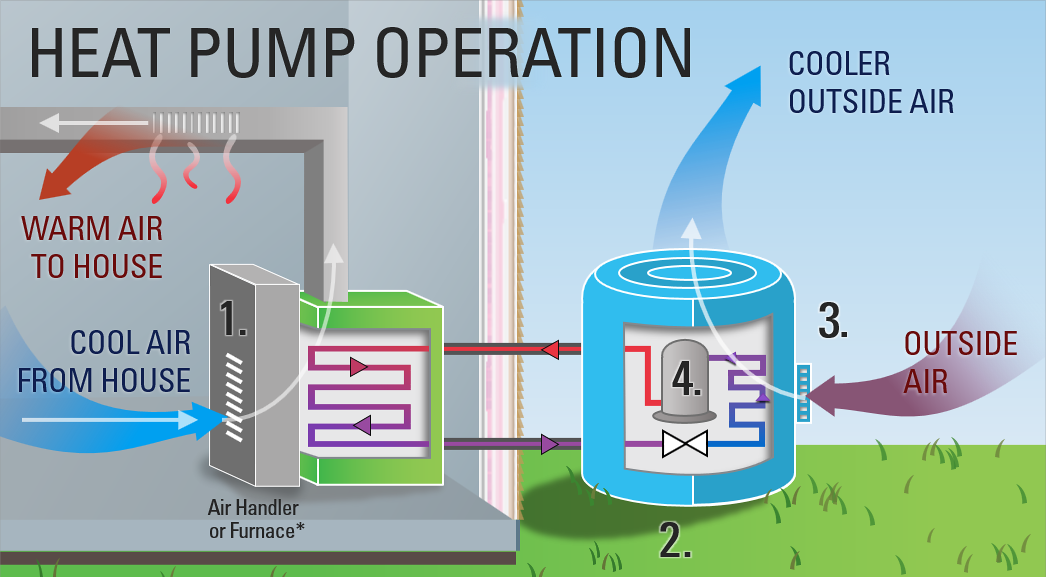
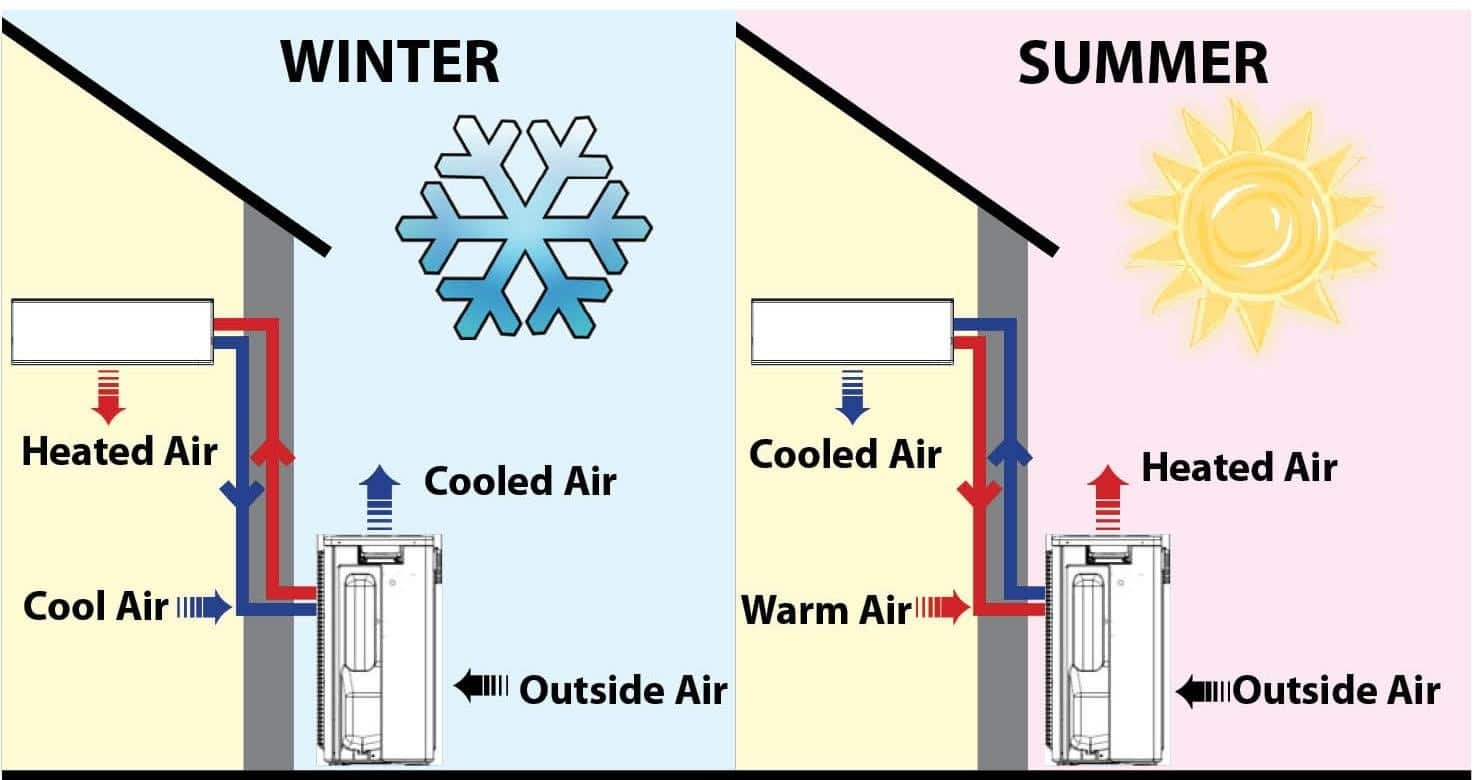


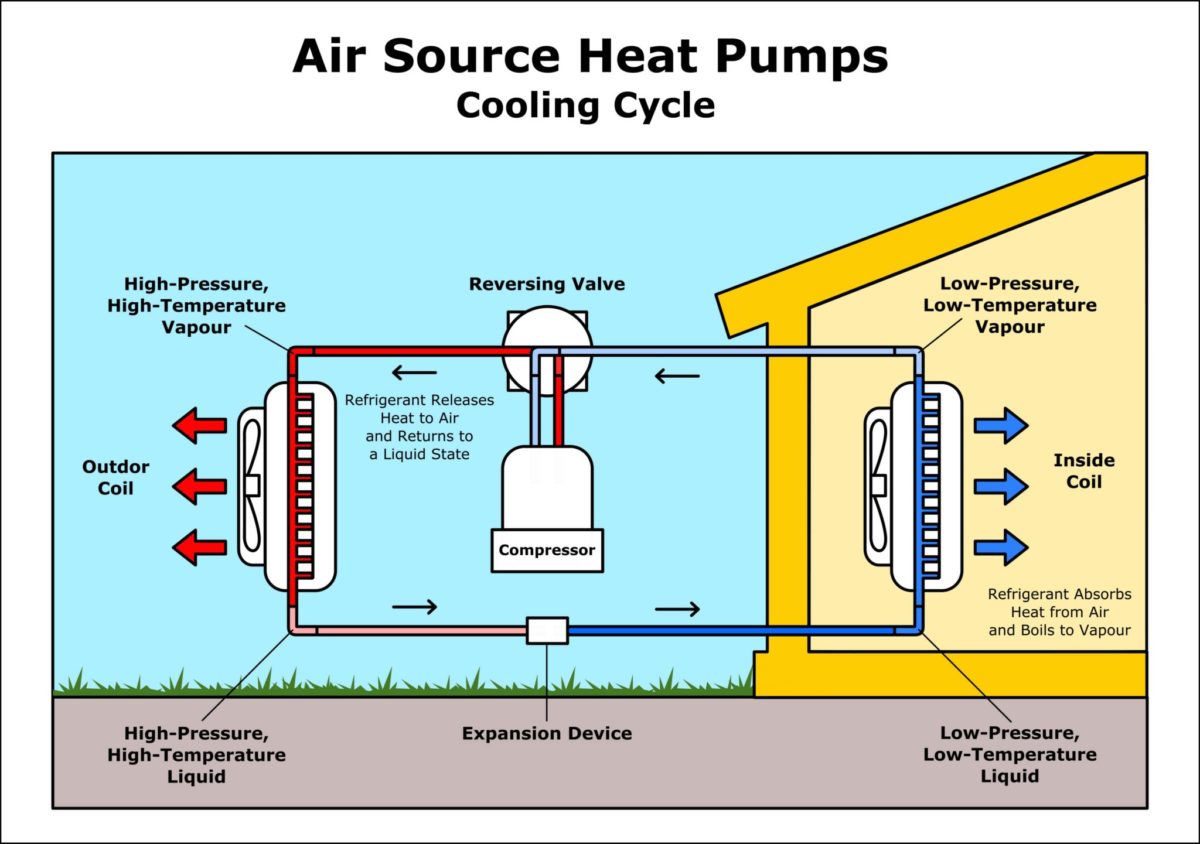
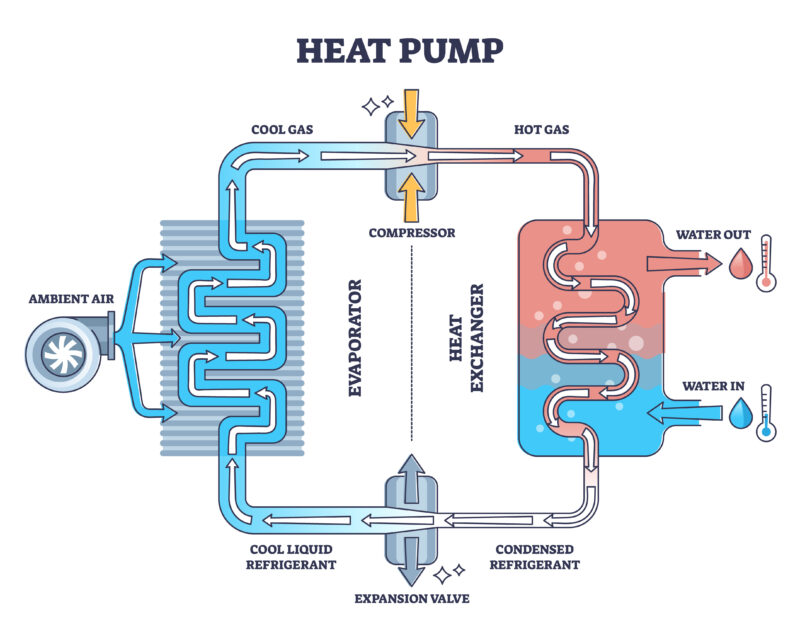
:max_bytes(150000):strip_icc()/GettyImages-1225021365-8424e0bfe36b4254862d3f0ca5031a94.jpg)

